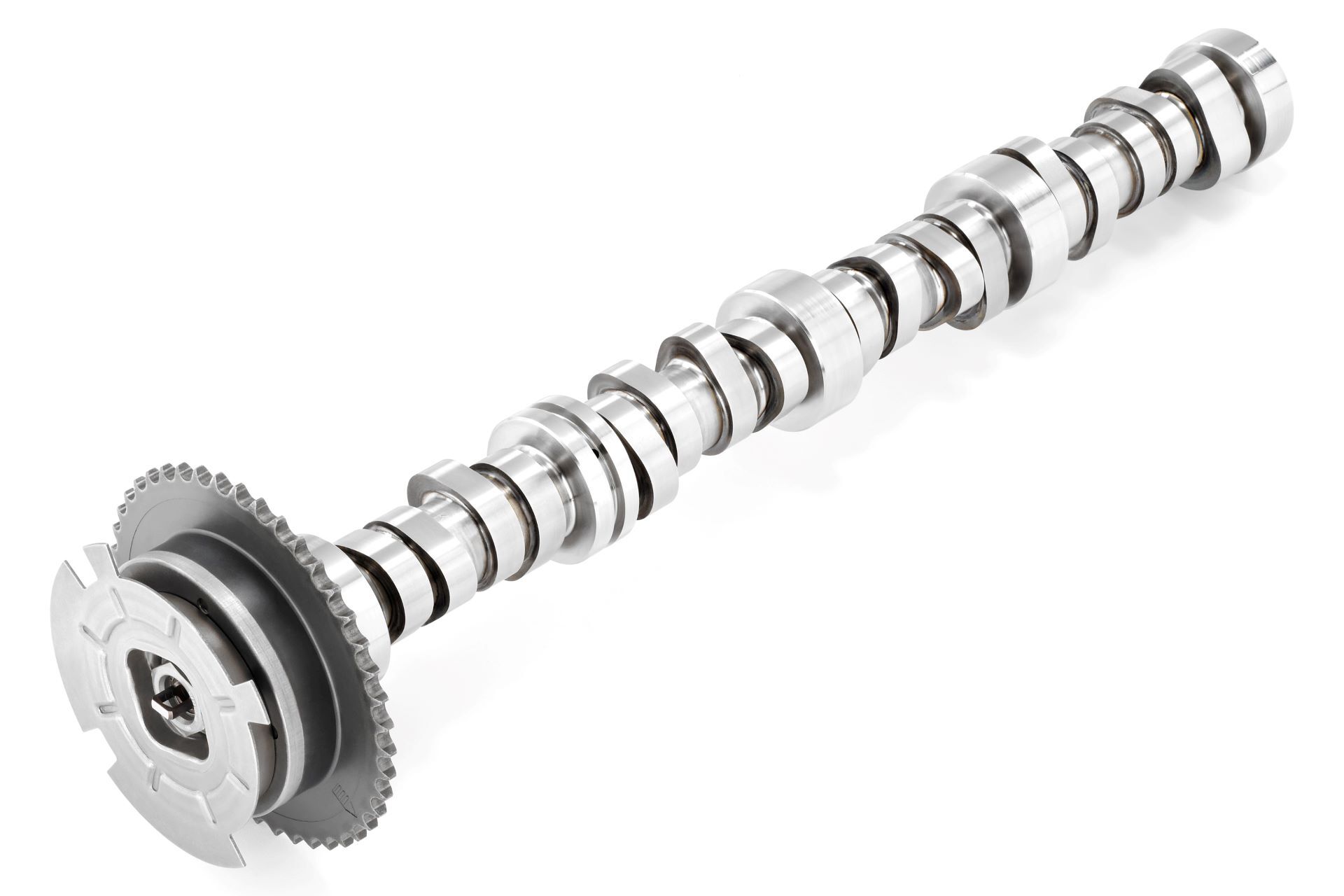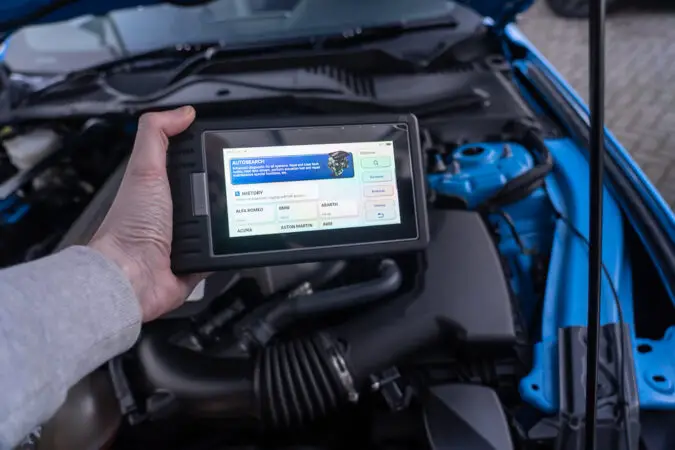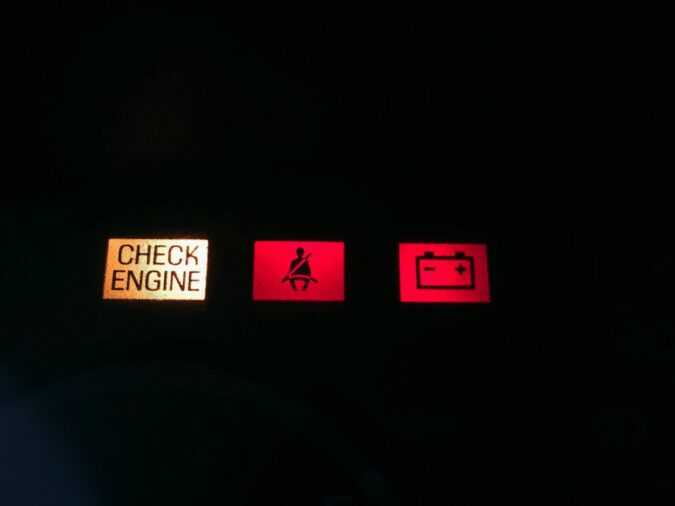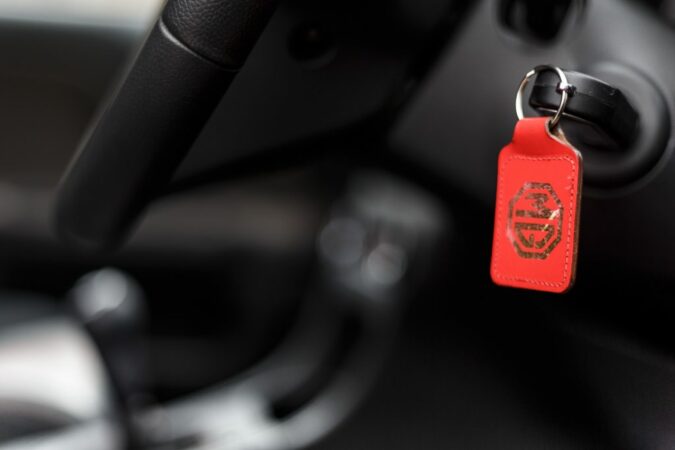Is your car continuously cranking before starting or doesn’t start at all and you got P0341 code? If that is the case, then you are at the right place because, in this article, there will be a lot to cover on this topic, and learn how you can tackle this problem.
Doing your own research before you try to take your car to a mechanic’s shop is always a good idea because by doing this, you will get a perspective of what could be wrong with your car. How much for a car diagnosis costs you about $120. And an OBD2 tool is only about $30. So, it is always a good idea to have one of these tools around.
These tools will save you hundreds or even thousands of dollars if you are asking me. So, fixing these minor sensor-related issues on your own is always highly recommended. You don’t want to get yourself ripped off by sketchy mechanics who will replace dozens of parts before they finally sort out your problem.
And this is why we are here to help you out with your problem and make sure that you sort it out. First, we will cover the basics of car diagnostics. Then we will cover the camshaft position sensor and the codes associated with it, including the P0341 code.
Then we will elaborate more on the definition of this code and see what are the causes, and symptoms, how to diagnose the code, and how to test the component with a multimeter. So, if you want to learn more, follow along.
Car Diagnostics
Now before we dive into complex topics like the P0341 definition, let’s first learn more about what is car diagnostics. People are facing similar issues and want to have a basic grasp of knowledge when it comes to car diagnostics and understand more about what it is and how it’s done the right way. So, let’s cover this briefly.
If you know about classic cars, you know that back in the day there weren’t computers to run these cars like today. Back in the good old days as would some nostalgic people would say, everything was analog.
And by analog, we mean that everything was regulated with the input of the driver. The car simply didn’t have the brain to do everything on its own and regulate a ton of systems as in modern cars.
So, diagnosing these cars was a lot easier. The mechanic simply sorted out the problem based on how the car would sound and drive. They’ll tweak the valves a little bit, tune up the carburetor, and change the spark plugs and you will be good to go.
But not anymore, nowadays cars have dozens of sensors that regulate everything. And each sensor has a special function. Once some of these sensors fail, they will trigger a DTC (diagnostics trouble code) code and a check engine light. Examples of these DTCs include P0014 Chevy Equinox, P0017, as well as P0340, and more.
So, you have to diagnose the car with an OBD2 scanner. And move on from there. Then test the specific sensor or electrical component with a special tool known as a multimeter.
This will allow you to check the properties of this sensor and see if this is causing the problem or if the problem with the P0341 code is caused by something else. So, these tools are essential when it comes to solving problems.
Camshaft Position Sensor
Now let’s take a look at what is the camshaft position sensor before we dive into the P0341 code and learn more about what this code is.
So, what is a camshaft position sensor? Well, this sensor name is self-explanatory. This is an electronic device installed on your car, more specifically on the camshafts and this sensor has the task of observing the position of the camshaft.
So, the location of the camshaft position sensor is usually on top of the engine. If you run a DOHC engine where the camshafts are located on the top, it is a logical assumption that the sensors would be mounted on top of the engine as well. It’s very different when you compare SOHC vs DOHC.
A single camshaft engine has only one sensor, while the double overhead camshaft (DOHC) engine has two sensors, one per each camshaft. And if you run let’s say a V8 with DOHC design, you even have up to 4 of these sensors since there are 2 intake and two exhaust camshafts on the engine.
On the other hand, OHV engines, like the pushrod engines that run only one camshaft in the center, have only one camshaft sensor since there is only one camshaft. In other words, there’s no sets of camshaft sensors in here.
What is important to add is that you should never confuse the camshaft sensor with the crankshaft (crank) sensor. They might be causing similar symptoms. But the crank shaft position sensor is observing the position of the crankshaft that is mounted at the bottom of the engine. And there is only one of these sensors.
Nevertheless, when the camshaft position sensor fails, it could trigger some codes, including the P0341. And more on what codes can be triggered, we will cover more in the next chapter.
Camshaft Position Sensor Code
When it comes to the camshaft position sensors, there are a lot of codes, including the P0341 code. It really depends on which specific sensor is bad.
The codes for sensor A range from P0340 to P0349 for this specific sensor that we are interested in covering. And every one of these codes indicates a different problem. Some of the codes indicate that the sensor is out of range, and some indicate a problem with the internal circuit and report high, low, or intermittent voltage.
Now let’s move on and cover the P0341 code in great detail.
P03041 Camshaft Position Sensor A Bank 1
Now let’s move on and learn more about what this P0341 trouble code is all about. What is the definition of this code? Let’s elaborate more on that.
The definition states as “P0341 Sensor A Bank 1 Camshaft Position Sensor Circuit Range/Performance”. So, what does this long definition mean?
Well, this means that the camshaft position sensor A on bank 1 is not giving a signal in the expected range. Sensor A is the sensor found on the intake camshaft, while B is the exhaust camshaft of your engine. So, the intake sensor is producing problems.
When it comes to locating this sensor, you have to be aware that this sensor is located on bank 1. This is where cylinder 1 is located. If you have 1 bank on your engine, then you know where to look if you have two banks, you should learn which side is bank 1 for your specific application.
When it comes to the specific problem with the code P0341, the sensor is probably producing a really low signal or abnormally high signal. So, the feedback that this sensor delivers cannot be deemed low or high. But in this case, the sensor is completely off, either below minimal or too high.
This often leads to a completely dead sensor. But this isn’t always the case since there could be other causes that could trigger this code as well. Later on in the article, we are going to elaborate more on these causes and see what could trigger this P0341 code.
Causes For The P0341 Code
Now let’s move on and learn more about the causes of the P0341 code. Knowing the causes will help you out quite substantially when it comes to diagnosing this problem.
In the following chapters, we are going to elaborate on all of the possibilities in great detail and help understand what could be the root cause of the P0341 code. So, let’s elaborate on the possibilities in the following chapters.
1. Bad Camshaft Sensor Can Trigger P0341
The first common cause for this problem of the P0341 code is a dead sensor. The sensor might be dead or has shorted out on the inside.
So, if this happens, the signal will be out of range like in the error message that we are discussing in this article, with the code P0431.
A good sensor or even a slightly bad one should always deliver readings somewhere in the expected range. And a dead sensor if everything is well will the wiring and connectors is the most expected outcome.
Still, when something like this happens, you have to test a bad camshaft position sensor with a multimeter and see more about how the sensor behaves. You just don’t want to pay a ton of money for this sensor and then the problem keeps repeating itself.
That’s why test the sensor first and then replace the sensor if it’s faulty. And more about that, we are going to cover more in the following chapters. Now let’s resume with the common causes.
2. Bad Reluctor Wheel Can Trigger P0341
The next most common cause for the P0341 code is a bad reluctor wheel. But what is a reluctor wheel?
A reluctor wheel is like a ring with grooves in it. That’s why this component is also known as a tone ring or timing wheel. This ring doesn’t do anything except that it helps the camshaft sensor get a proper reading.
As you probably know, a sensor cannot read a smooth surface. This is why there should be a grooved rotor of some sort so that the sensor gets a proper reading and make sure that the timing is correct.
And what is bad is that in some cases this component can get bent or some of the teeth can be lost if the component is not handled properly. This is why you should be very cautious if you purchase a used camshaft or a used cylinder head since if this component is bad, you will have a difficult time with the sensor.
The sensor will not be able to get the right reading from the reluctor wheel and it could report that the reading is out of range. So, that’s why we always recommend that you make sure that the reluctor wheel is good if you got this problem after installing the camshaft or doing some other work inside of the engine.
Also, if you are rocking a timing chain, make sure that the reluctor wheel is nice and clean and not covered in gunk. Foreign matter can also make this sensor malfunction. Now let’s move on to the next causes for the P0341 code.
3. Cam Sensor Wiring Too Close To Spark Plug Wiring
Now let’s move on to the next cause for the P0431 code. And this is a really interesting cause that when we first read about it, we thought this is not possible. But if you think well, this could be a cause for a problem like this.
The cause reportedly for this type of code is the spark plug wires that go near the wiring of this sensor and this would somehow be causing interference to the sensor. And this caused electromagnetic interference.
There was a high resistance in the ignition or the spark plug wire because of faulty secondary ignition components. So, check if the wires of these two components are not touching. Now let’s move on to the next probable cause.
4. Bad Connector Can Trigger P0341
The next probable cause for this problem with the P0341 code is a bad sensor connector. Wires can get damaged or loose, and corrosion inside the connectors can develop.
So, that’s why a thorough inspection of the wires has to be done and you have to determine if you get the right readings. Usually, these can be 2-wire or 3-wire sensors. Later on, in this article, we are going to explain how you can test them. Now let’s continue with the last cause.
5. Bad Wires
The next and last probable cause for the P0341 code on our list is the situation with the wires that go to the sensor.
If wires are damaged, they could cause the sensor not to show a signal. So, it is really important that you check if some of the wiring that go from the wiring harness to the sensor is damaged or not. And if there is damage, you should fix the connection and insulate the wires properly.
And this problem should be fixed. If not, follow along because we are also going to explain how this sensor should be tested with a multimeter.
Symptoms Of The P0341 Code
We have covered the P0341 code and learned more about the causes of this code. Now that we learned what could cause this code, we can move on and learn more about the bad camshaft sensor symptoms that this code will trigger.
There are not a lot of symptoms and if you have this problem, you are already aware of them, since there is no way to avoid them. But anyways, let’s cover them in detail.
1. Check Engine Light
Now let’s dive into the symptoms of the P0341 code. And the first on our list is of course the check engine light.
And you are probably already aware of this symptom. What is worth noting is that in some cases, there could be other codes behind the check engine light along the P0341 code.
2. Car Continuously Cranks Before It Starts
The second symptom in our list is the situation when the car continuously cranks before it starts. This continuous cranking when the car battery is good can only lead to a bad camshaft or a bad crankshaft position sensor.
The symptoms of a bad crankshaft position sensor include OBD error codes such as P0335. Otherwise, you might have to consider repairs to the entire crankshaft unit. While you’re there, it’s also worth checking the crankshaft pulley, and surrounding components for any issues.
Sometimes the sensor can get a reading and the car will start. But that doesn’t always have to be the case as we are going to elaborate in the following chapter on the next symptom of the P0341 code.
3. Engines Don’t Want To Start
The next symptom on our list of symptoms concerning the P0341 code is the situation when the engine does not want to start at all.
The car continuously cranks but nothing happens. And if this happens, you should not overdo it. Since you can damage the starter motor, as well as damage the battery of your car. So, don’t be too aggressive when it comes to cranking your car. If the car cranks and does not start, it means that there is a sensor-related issue.
For more context, do check out our detailed guides on the no crank no start problem, issues where your Toyota Camry cranks but won’t start, as well as problems where the engine cranks but your car won’t start.
4. Engine Stalls
And the last on our list of symptoms concerning the P0431 code is the situation when the engine simply stalls.
And this could also happen if the sensor simply stops working. What is unfortunate, this could happen sometimes at highway speeds or cause your car to be losing power when accelerating. So, awareness is key while you drive and being able to react at any given moment to avoid some really dangerous situation.
And that’s why we would not recommend a car that you know that there is a P0341 code. In these cases, diagnostics is key. And that’s what we are going to cover in the following chapter and elaborate more on how to diagnose these sensors with a multimeter.
How To Diagnose The P0341 Code
Now let’s take a look at how to test these sensors in order to solve the P0341 code. We will cover both 2-wire and 3-wire sensors. 3-wire sensors are nowadays more common.
But when it comes to the two-wire sensor, you have to just tweak the multimeter to measure ohms. Then place the probes on the connectors, a good sensor should produce at least 2,000 ohms.
You can also test the continuity to see if the ground is good. Just tweak the multimeter to the continuity setting and the multimeter should create a beeping sound when you touch the ground.
And last is to measure voltage, you can do this by adjusting the multimeter to 2V and then placing the connectors to the sensor. As you move the sensor over the reluctor, it should create voltage.
Next is the 3-wire sensor. These sensors do not produce their own voltage, so they require 12V in order to operate. One wire is the ground, the other is the signal and the last is the 12V supply line.
First, you have to find which wire is which. And you can only test these sensors by backprobing them with metal clips while the car is running. More specifically the ground and signal wire. And if the sensor is good, there should be a minimum voltage and a maximal voltage. More in detail, you can check the video that we attached.
Replaced Camshaft Position Sensor But Still Get Code
If you have already replaced your sensor and you still get the P0341 code, you probably have some other problem. More specifically, the new sensor can also be faulty, which often happens to be the case. Also, there could be damage to the reluctor ring that we covered, there could be some problems with the connector, as well as the wires.
This is why troubleshooting the problem with a multimeter is needed before you spend $100 or more on a sensor. Nonetheless, the cost of a sensor is far cheaper than the cost of a replacement camshaft, in its entirety.
P0341: In Conclusion…
In this article, we covered the P0341 code. First, we learned more about car diagnostics and how it is done. Then we discussed the camshaft sensor and what it does, as well as the P0341 code, and learned more about the main causes, and symptoms, and also how to troubleshoot one of these camshaft position sensors with a multimeter.
FAQs On The P0341 Code
Now let’s answer some frequently asked questions.
What Is A CMP Sensor
A CMP is a camshaft position sensor, This sensor communicates with the PCM and gives the PCM data about the position of the camshaft, and measures the rotations of the camshaft. This sensor is crucial when it comes to the ability of the car to start.
What Does A Camshaft Do
The camshaft is a component that is often located on top of the engine in modern DOHC and SOHC designs, or in the center of the block if you have an OHV pushrod engine. This component controls the input of fuel as well as the expulsion of gases. In general, the camshaft activates the valves on the cylinder head.
Where Is The Camshaft Sensor Located
The camshaft sensor is often located on the cylinder head of the engine, usually on one of the sides of the engine. So, if you know where the camshafts go, you will be really fast to locate this component.
What To Do After Replacing Camshaft Sensor
After replacing the sensor you have to delete the codes and then start the engine. If everything is good, then you will no longer have the check engine light and codes associated with it.
How To Replace Camshaft Position Sensor
Replacing a camshaft sensor is really easy, just locate the sensor, this sensor is mounted on the cylinder head. Then unbolt the connector and remove the screws that are holding the sensor. Once you did that, you can move to removing the sensor and installing the new one.
How To Start A Car With A Bad Crankshaft Sensor
You cannot start a car with a bad crankshaft position sensor. The reason is that this sensor is basically in control of this process. So, you have to replace it in order to start the engine.





